

 First published in 1912 by The New York Book Company First Racehorse Publishing Edition 2017 All rights to any and all materials in copyright owned by the publisher are strictly reserved by the publisher. Foreword 2017 Leanne Brown Racehorse Publishing books may be purchased in bulk at special discounts for sales promotion, corporate gifts, fund-raising, or educational purposes. Special editions can also be created to specifications. For details, contact the Special Sales Department, Skyhorse Publishing, 307 West 36th Street, 11th Floor, New York, NY 10018 or . Racehorse Publishing is a pending trademark of Skyhorse Publishing, Inc., a Delaware corporation. 10 9 8 7 6 5 4 3 2 1 Library of Congress Cataloging-in-Publication Data is available on file. 10 9 8 7 6 5 4 3 2 1 Library of Congress Cataloging-in-Publication Data is available on file.
First published in 1912 by The New York Book Company First Racehorse Publishing Edition 2017 All rights to any and all materials in copyright owned by the publisher are strictly reserved by the publisher. Foreword 2017 Leanne Brown Racehorse Publishing books may be purchased in bulk at special discounts for sales promotion, corporate gifts, fund-raising, or educational purposes. Special editions can also be created to specifications. For details, contact the Special Sales Department, Skyhorse Publishing, 307 West 36th Street, 11th Floor, New York, NY 10018 or . Racehorse Publishing is a pending trademark of Skyhorse Publishing, Inc., a Delaware corporation. 10 9 8 7 6 5 4 3 2 1 Library of Congress Cataloging-in-Publication Data is available on file. 10 9 8 7 6 5 4 3 2 1 Library of Congress Cataloging-in-Publication Data is available on file.
Cover design by Lori Wendin Cover artwork: iStockphoto Print ISBN: 978-1-944686-56-7 Ebook ISBN: 978-1-944686-58-1 Printed in China TABLE OF CONTENTS PART I
INTRODUCTION PART II
RECIPES AND MENUS PART III
MISCELLANEOUS FOREWORD Youve picked up Old-Fashioned Economical Cooking, a cookbook from 1912 by a woman named Winifred Gibbs. Youre curious; what was life like one hundred years ago? How did the stoves work? More importantly, were the pancakes as good? Usually when we study history we study the major events: the invention of the first vaccines, womens suffrage, school desegregation. Old-Fashioned Economical Cooking dispenses recipes and advice for daily domestic life. It tells the story of everydaythe soil in which major historical events grow. Its reality television, not CNN; Pinterest tutorials, not the New York Times. Ms.
Gibbss goal is for her readers to get the most for their food dollar. Beyond filling up on a bunch of potatoes, they should be nourished with healthy food. But what does that mean? The best healthy eating advice has not changed in one hundred years. Mrs. Gibbs states plainly that a mixed diet is suited to all persons. Currently, Dr.
Oz exhorts his viewers to eat all the colors of the rainbow and Michael Pollan decrees we eat food, not too much, mostly plants. What has changed is how we consume, develop, and publicize information. The fast pace of news cycles privileges new information, making it seem like health advice is always in flux. It makes it seem like we never know if eggs are good for us. But the truth is simpleeggs are good for you, just dont eat too manyits practicing healthy eating that is hard. Mrs.
Gibbs isnt here to tell you it will be easy. In her world, healthy food is relative. If you sit at a desk all day, you need a salad. If you are doing physical labor, meat and potatoes are the healthier, economical choice. Family taste and means are part of the equation. And rather than dispensing blanket advice, she advises her readers to become experts, learning how cake batter should feel and how bread sounds.
Become a master; dont just follow directions. Respect food as the primary source of energy for your body. The problem for the modern reader is not with Mrs. Gibbs advice itself, but her assumption of who implements it; the home-maker and only the homemaker. For Mrs. Gibbs the homemaker was just like her: a woman.
The homemaker role was not chosen, but expected. The obligation to cook, and to cook with a smile on your face, is what changes cooking from a creative, important endeavor with clear positive outcomesfull tummies and a delicious experienceto a soul-sucking onerous chore. I hope I dont need to explain why women should not be expected to take this on. Lets simply roll our eyes and look forward. If we can ignore Ms. Gibbss outmoded notions of who is doing the work, replace the word housewife with every member of the household, she with they, then we can see with fresh eyes the egalitarian vision of Old-Fashioned Economical Cooking.
Regardless of how much money the world has afforded you, you deserve good food. This is the core of Ms. Gibbss work, as true today as it will be in one hundred more years. I could not agree more. Leanne Brown, 2017  THIS little book aims to be both instructive and suggestive. The principles of right feeding, economy, and cooking are set forth, with a variety of recipes and menus, and it is hoped that the general public will be interested in these important subjects.
THIS little book aims to be both instructive and suggestive. The principles of right feeding, economy, and cooking are set forth, with a variety of recipes and menus, and it is hoped that the general public will be interested in these important subjects.
The book is planned for housekeepers who wish to begin simply, but the importance of attractive food and service is insisted upon as bearing directly on the health of the family. The recipes are planned for two persons, with the idea that they may be quite easily adapted to a larger number. These rules have all been tested, and many of them are family favorites. Thanks are due to my assistant, Helen E. Smith, for efficient help in the preparation of this book, and to Mrs. Mary Hinman Abel and Miss Minnie M.
Smith, for permission to use recipes from their writings. Also for quotations made from Miss Anna Barrows Rules for Cooking Fish. W. S. G.  PART IINTRODUCTION FOOD VALUES EVERYONE wishes to get the best possible results from time and effort put into daily work.
PART IINTRODUCTION FOOD VALUES EVERYONE wishes to get the best possible results from time and effort put into daily work.
It is equally important to make each penny expended for food bring in as much strength as possible. A practical knowledge of food values fits the housekeeper to really feed her familythat is, to see that tired muscles are built up, overwrought nerves calmed, and all forms of bodily weakness overcome. The busy housewife need not plunge deeply into chemistry, but she should learn the few great classes of food, and what each does for the building up of the body. We may temporarily overcome hunger by eating a quantity of bulky food such as potatoes, when really our bodies have not been fed properly at, all. What Every Housewife Should Remember We depend on food to build up the strength used in daily life. If we let stimulants take the place of food, we use up strength faster than we can make it, as stimulants give only a false strength.
Food is necessary for warmth. A mixed diet is best suited to all persons. This means: Bread and butter. Cereals. Rice or potatoes. Vegetables and fruits.
Meat, eggs, or milk. Sweets. Childrens stomachs have not grown up, so to speak, and we must not expect them to do the same workthat is, digest the same kind of food as adults. The constitution of everyone is largely influenced by the kind of food eaten during childhood. In the treatment of disease, most modern physicians consider that proper diet is more important than medicine. Classes of Food For convenience, foods are divided as follows: 1.
Proteidsstrength-giving foods, to give muscular en durance.  2. Fats, to give flesh and heat.
2. Fats, to give flesh and heat. 
Next page
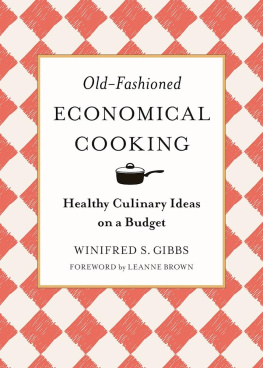



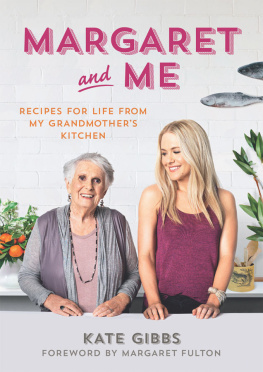

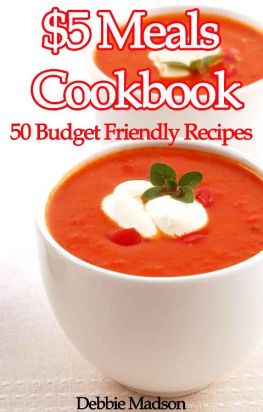



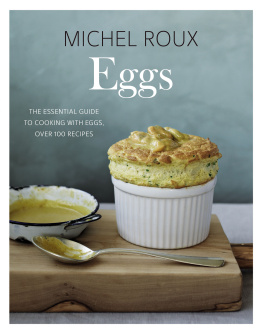

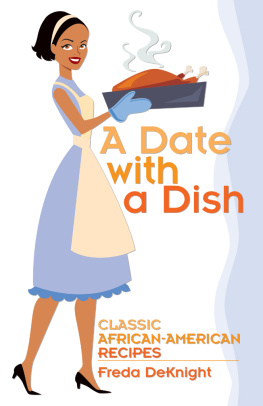

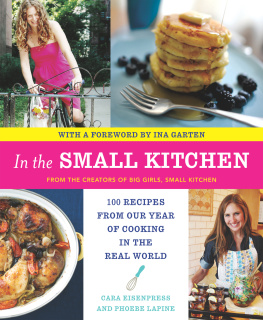

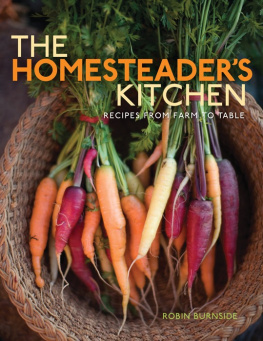


 First published in 1912 by The New York Book Company First Racehorse Publishing Edition 2017 All rights to any and all materials in copyright owned by the publisher are strictly reserved by the publisher. Foreword 2017 Leanne Brown Racehorse Publishing books may be purchased in bulk at special discounts for sales promotion, corporate gifts, fund-raising, or educational purposes. Special editions can also be created to specifications. For details, contact the Special Sales Department, Skyhorse Publishing, 307 West 36th Street, 11th Floor, New York, NY 10018 or . Racehorse Publishing is a pending trademark of Skyhorse Publishing, Inc., a Delaware corporation. 10 9 8 7 6 5 4 3 2 1 Library of Congress Cataloging-in-Publication Data is available on file. 10 9 8 7 6 5 4 3 2 1 Library of Congress Cataloging-in-Publication Data is available on file.
First published in 1912 by The New York Book Company First Racehorse Publishing Edition 2017 All rights to any and all materials in copyright owned by the publisher are strictly reserved by the publisher. Foreword 2017 Leanne Brown Racehorse Publishing books may be purchased in bulk at special discounts for sales promotion, corporate gifts, fund-raising, or educational purposes. Special editions can also be created to specifications. For details, contact the Special Sales Department, Skyhorse Publishing, 307 West 36th Street, 11th Floor, New York, NY 10018 or . Racehorse Publishing is a pending trademark of Skyhorse Publishing, Inc., a Delaware corporation. 10 9 8 7 6 5 4 3 2 1 Library of Congress Cataloging-in-Publication Data is available on file. 10 9 8 7 6 5 4 3 2 1 Library of Congress Cataloging-in-Publication Data is available on file. THIS little book aims to be both instructive and suggestive. The principles of right feeding, economy, and cooking are set forth, with a variety of recipes and menus, and it is hoped that the general public will be interested in these important subjects.
THIS little book aims to be both instructive and suggestive. The principles of right feeding, economy, and cooking are set forth, with a variety of recipes and menus, and it is hoped that the general public will be interested in these important subjects. PART IINTRODUCTION FOOD VALUES EVERYONE wishes to get the best possible results from time and effort put into daily work.
PART IINTRODUCTION FOOD VALUES EVERYONE wishes to get the best possible results from time and effort put into daily work. 2. Fats, to give flesh and heat.
2. Fats, to give flesh and heat. 